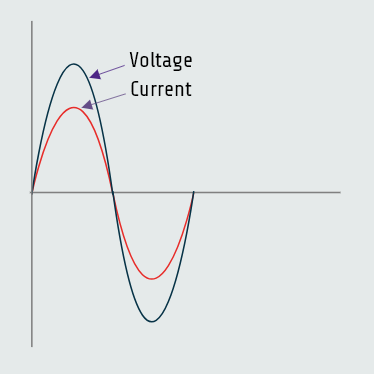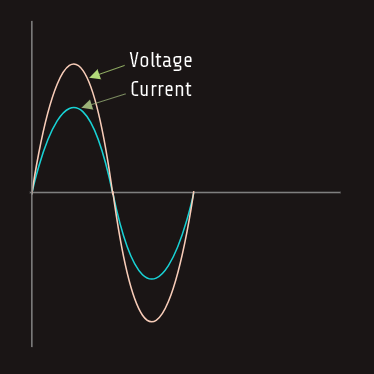The advantage of high-voltage transmission is that less current is required to produce the same amount of power. The reduction of current permits smaller wires to be used, which results in a savings of material.
In the very early days of electric power generation, Thomas Edison (The Edison Company), an American inventor, proposed powering the country with low-voltage DC. He reasoned that low-voltage DC was safer for people to use than higher-voltage AC. A Serbian American inventor and engineer named Nikola Tesla (The Westinghouse Company), however, argued that DC was impractical for large-scale applications; a disagreement that was finally settled at the 1904 World’s Fair held in St. Louis, Missouri, which set the precedent for how electric power would be supplied throughout the world.
AC waveforms
AC differs from DC in that AC reverses its direction of flow at periodic intervals. AC waveforms can vary depending on how the current is produced. One waveform frequently encountered is the square wave. Square waves are generally produced by electronic devices called oscillators. Another common AC waveform is the triangle wave. The triangle wave is a linear wave, one in which the voltage rises at a constant rate with respect to time. Linear waves form straight lines when plotted on a graph. The most common of all AC waveforms is the sine wave.
Sine waves
Sine waves are produced by all rotating machines (a loop of wire cutting through lines of magnetic flux). The sine wave contains a total of 360 electric degrees. It reaches its peak positive voltage at 90°, returns to a value of 0 volts at 180°, increases to its maximum negative voltage at 270°, and returns to 0 volts at 360°. Each complete waveform of 360° is called a cycle. The number of complete cycles that occur in one second is called the frequency (Hz).
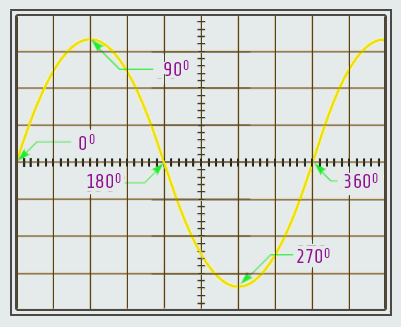
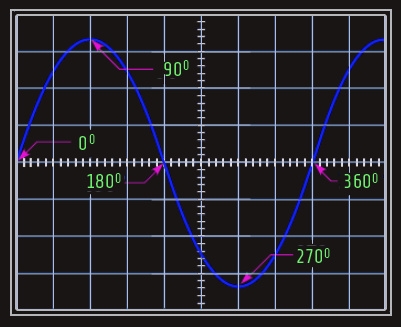
Sine waves are so named because the voltage at any point along the waveform is equal to the maximum, or peak, value times the sine of the angle of rotation.
EINST=EMAX x sin∠θ
Several measurements of voltage and current are associated with sine waves. These measurements are peak-to-peak, peak, RMS, and average values.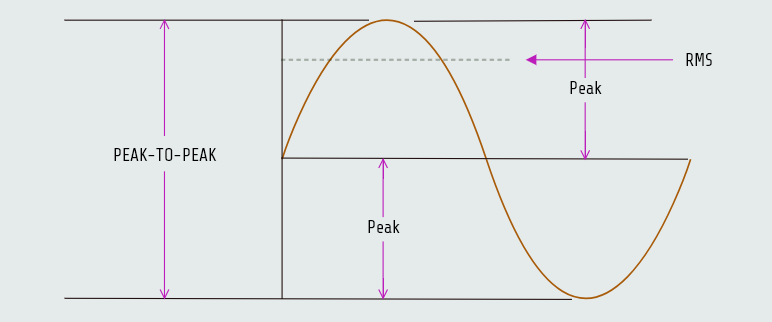
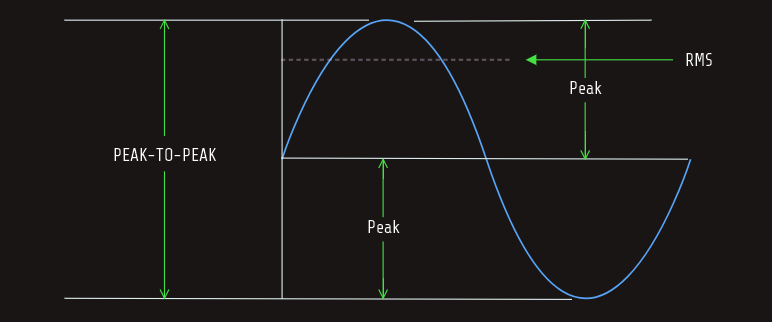
The peak value or amplitude is measured from zero to the highest value obtained in either the positive or negative direction. The peak value is one-half of the peak-to-peak value.
Let us consider now that we have a 100-volt battery that is connected to a 100-ohm resistor. This connection will produce 1 ampere of current flow, and the resistor will dissipate 100 watts of power in the form of heat. An AC alternator that produces a peak voltage of 100 volts is also shown connected to a 100-ohm resistor. A peak current of 1 ampere will flow in the circuit, but the resistor will dissipate only 50 watts in the form of heat. The reason is that the voltage produced by a pure source of DC, such as a battery, is one continuous value. The AC sine wave, however, begins at zero, increases to the maximum value, and decreases back to zero during an equal period of time. Since the sine wave has a value of 100 volts for only a short period of time and is less than 100 volts during the rest of the half cycle, it cannot produce as much power as 100 volts of DC.
The solution to this problem is to use a value of AC voltage that will produce the same amount of power as a like value of DC voltage. This AC value is called the RMS (root-mean-square), or effective, value. It is the value indicated by almost all AC voltmeters and ammeters. 

RMS = peak⁄√2
When the RMS values of voltage and current are used, the result is the same amount of power as like values of DC voltage and current. If 100 V RMS is applied to a 100 Ω resistor, the resistor will produce 100 W of heat. AC voltmeters and ammeters indicate the RMS value, not the peak value. Oscilloscopes, however, display the peak-to-peak value of voltage.
Average values of voltage and current are actually DC values. The average value must be found when a sine wave AC voltage is changed into DC with a rectifier. A full-wave rectification means that both the positive and negative half of the AC waveform are changed into DC, while a half-wave rectifier converts only one-half of the AC waveform into DC. 

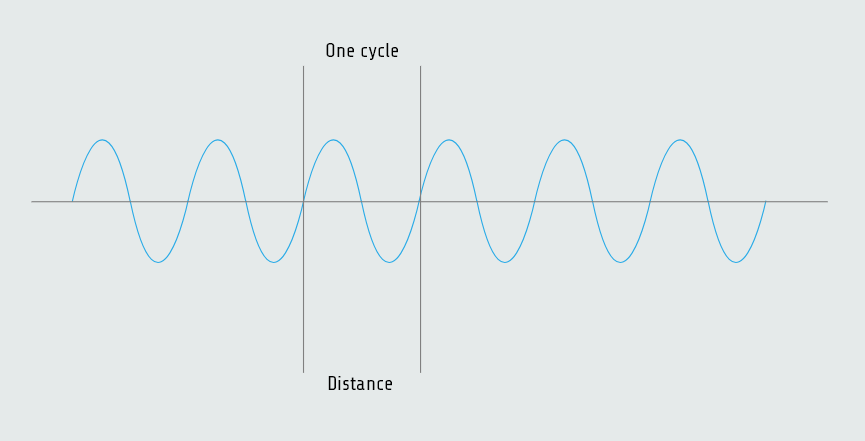
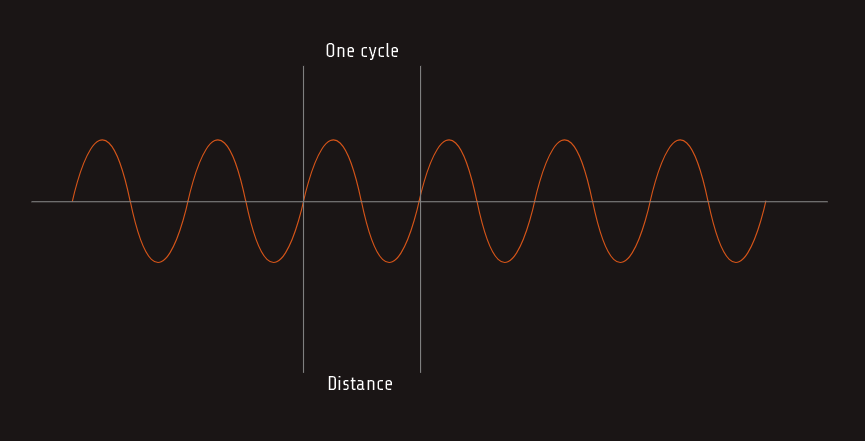
λ = speed of light (m/s) / frequency (Hz)
Resistive Loads
In DC circuits, there is only one basic type of load, which is resistive. In AC circuits, the type of load can vary depending on several factors. AC loads are generally described as being resistive, inductive, or capacitive depending on the phase-angle relationship of voltage and current and the amount of true power (watts) produced by the circuit. Resistive loads are loads that contain pure resistance, such as electric heating equipment and incandescent lighting.
Resistive loads are characterized by the facts that:
1. they produce heat
2. the current and voltage are in phase with each other
Any time that a circuit contains resistance, electrical energy is changed into heat.
When an AC voltage is applied to a resistor, the current rises and falls at the same rate as the voltage and reverses the direction of flow when the voltage reverses polarity. In this condition, the current is said to be in phase with the voltage.
